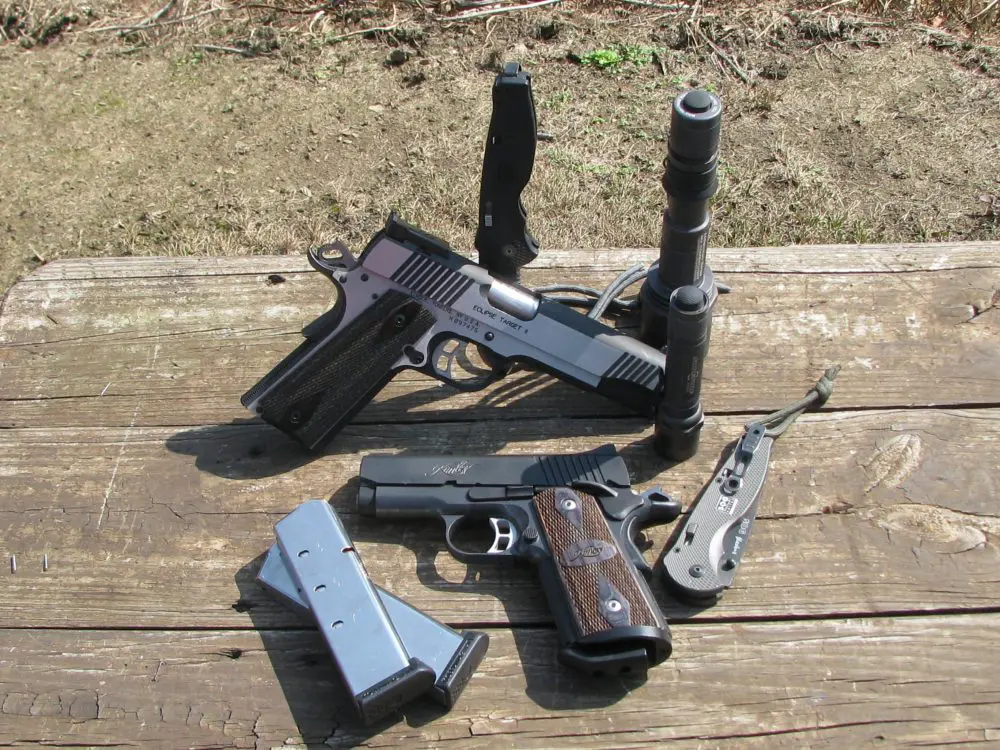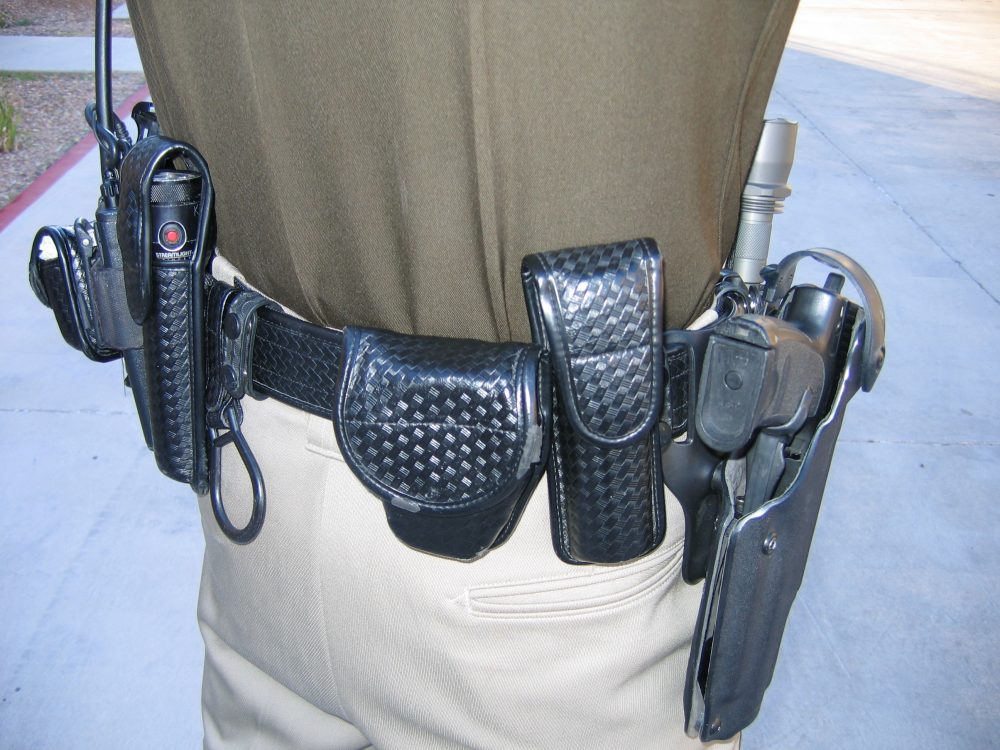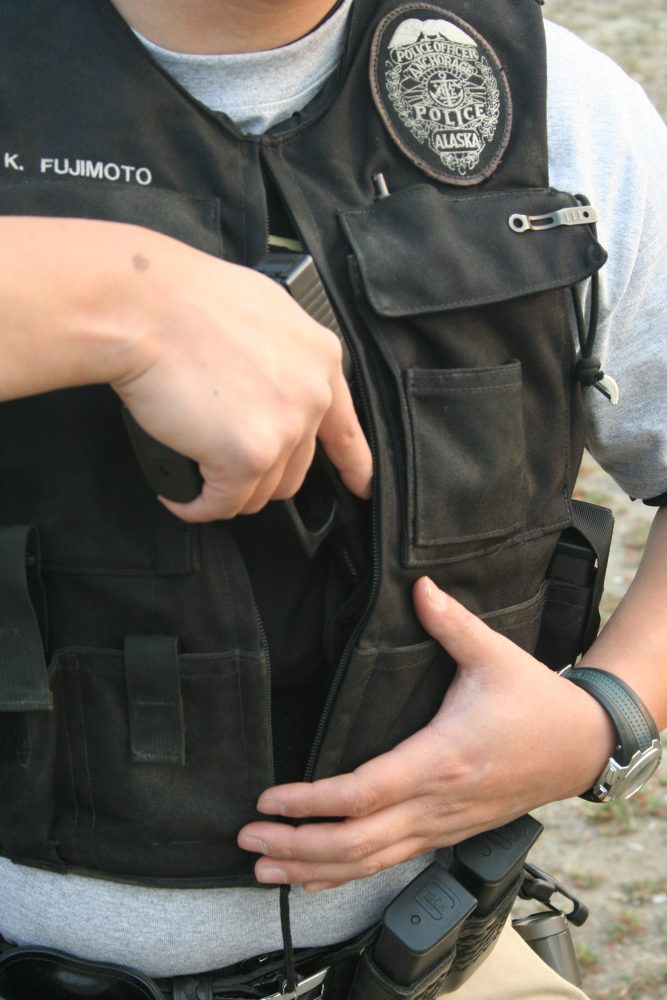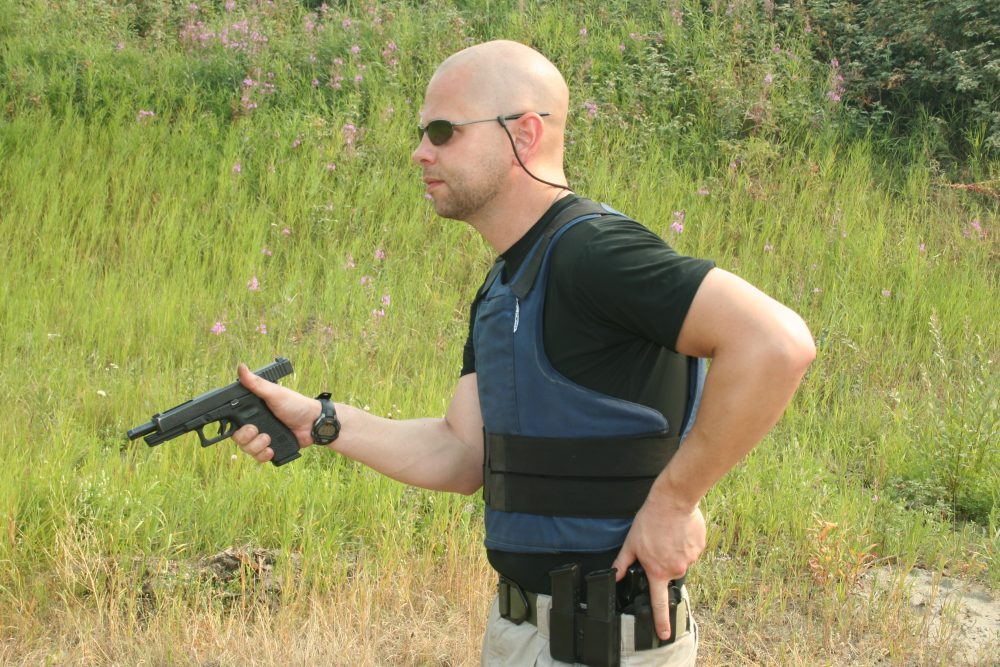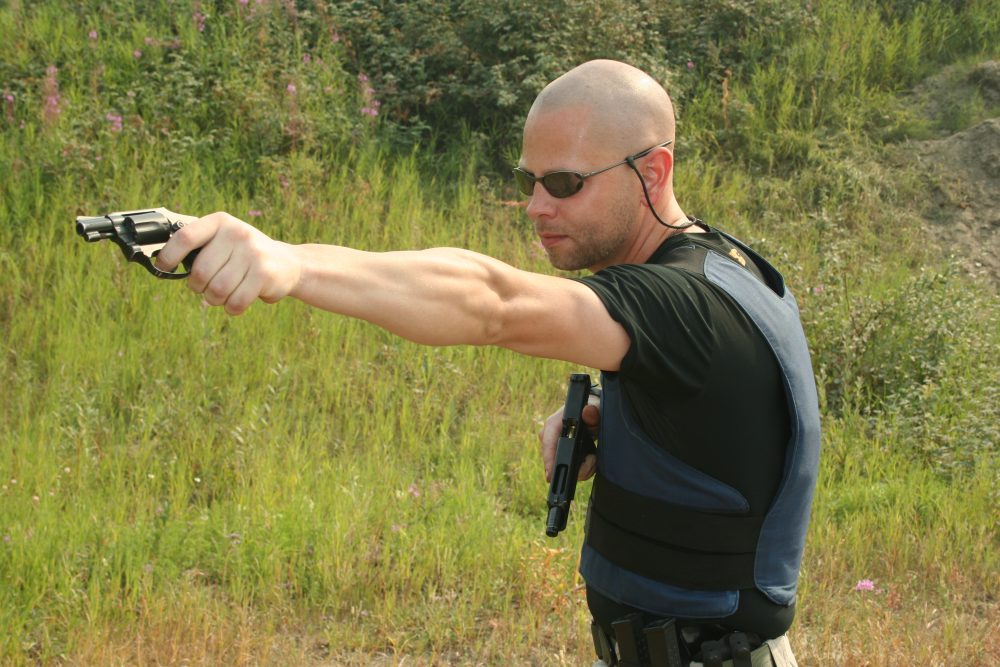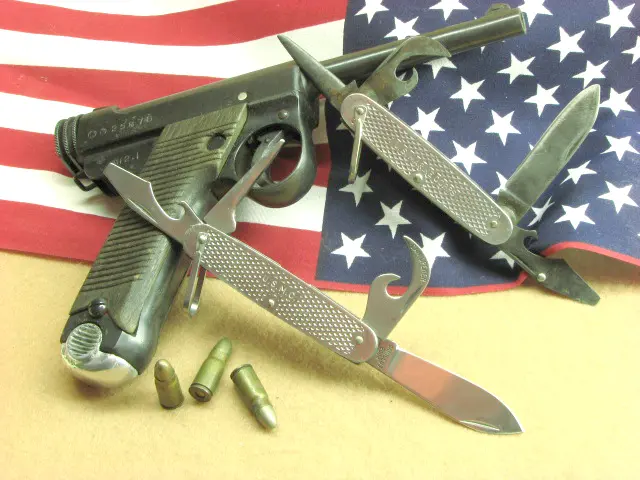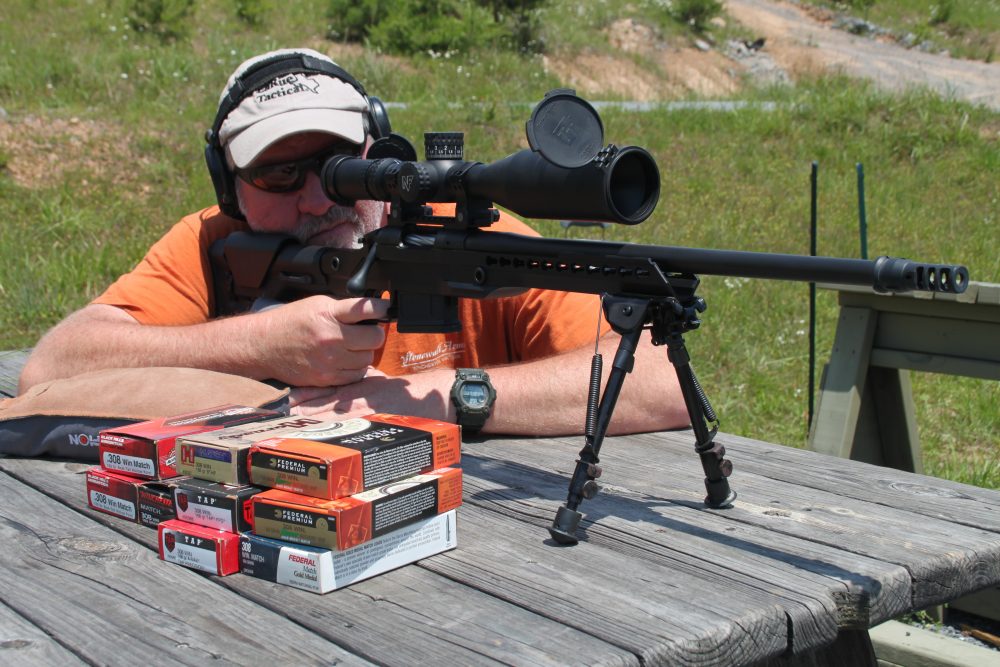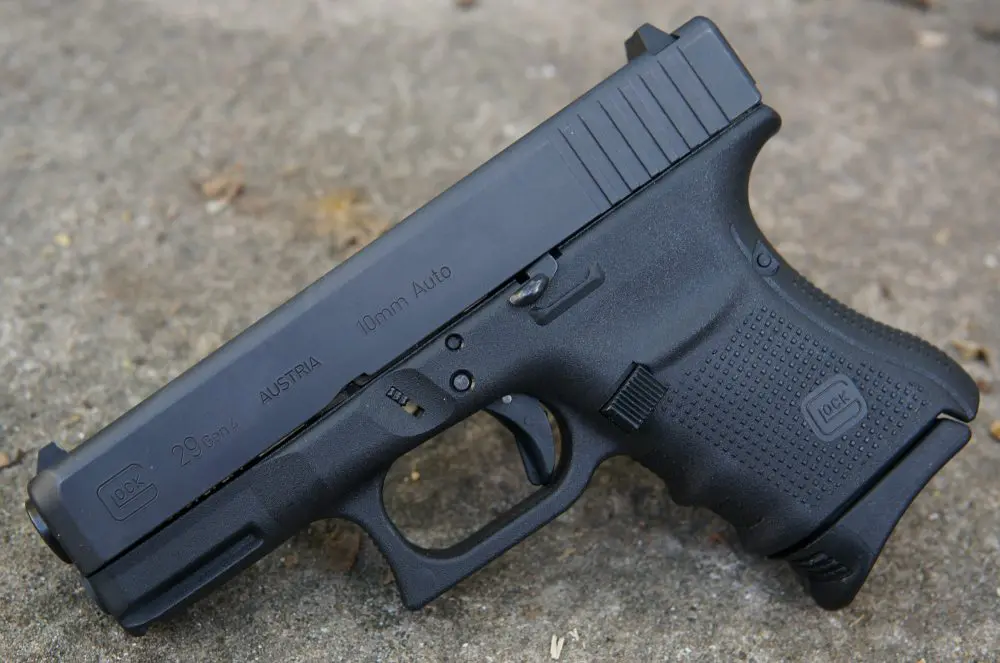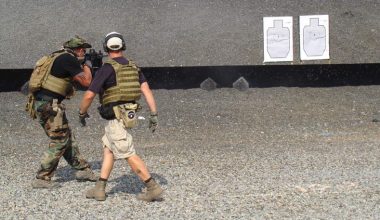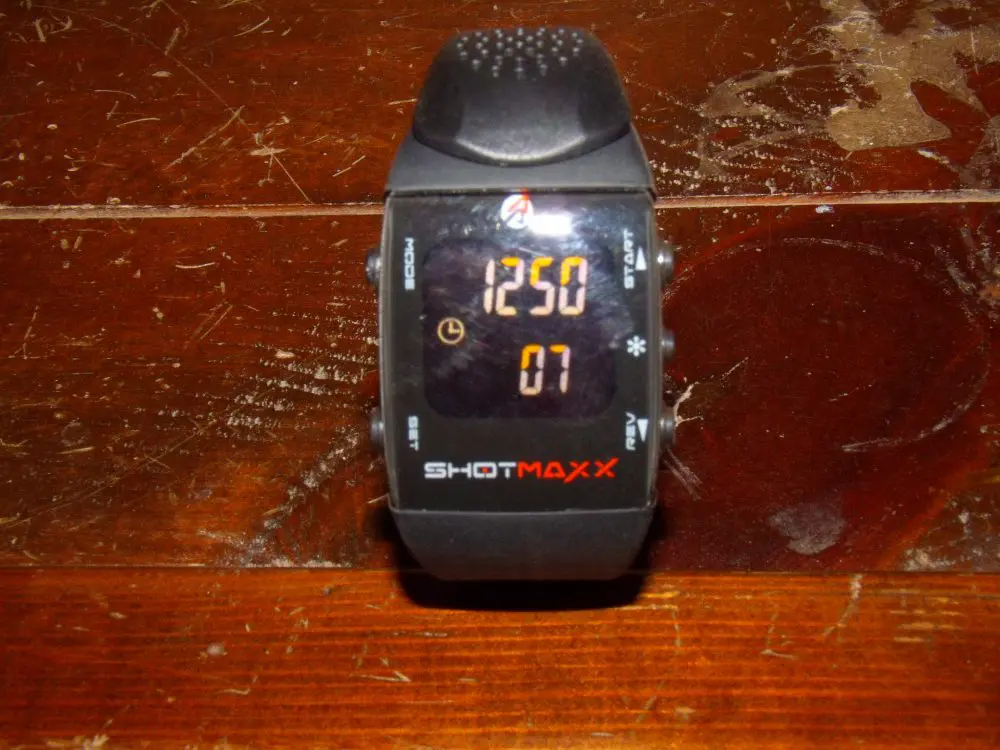Primary, smaller back-up, two SOG Flash II knives, two SureFire lights—good gear, good to go.
At first glance, being armed with a loaded pistol seems adequate for most situations. If you make the gun a Glock 17, you have 18 tries to stop an armed assailant. If you carry a gun, a quality light should always be with you. I habitually carry a Surefire E2 Executive, even in my briefcase on an airplane.
A folding knife from any reputable maker also seems like a good thing to have. In addition to performing mundane chores, after quality training a knife can be pressed into service as a defensive weapon.
What kind of paranoid idiot would think you need to carry more than these at any one time?
Lots of guys I respect.
I ran into Mike Givens at an IALEFI (International Association of Law Enforcement Firearms Instructors, Inc.) conference. Mike is a recently retired Las Vegas officer and a fine trainer. I bumped into his hip and felt the presence of a pistol—normal for any gun guy. Further investigation revealed two Glocks, two Surefire lights, two spare magazines, and two knives.
This is a light load for Mike, who works in Las Vegas. His normal load would cause him to drown if he fell into any body of water, and he stays away from swimming pools for this reason. It’s not unusual for Mike to have three guns, three knives, and five mags on him when he’s working.
Two lights and four magazines are visible. Two knives and the second gun aren’t.
We talked later that day over amber-colored beverages. The “Rule of Two” is promoted, trained with and encouraged by LVMPD (Las Vegas Metropolitan Police Department) firearms and defensive tactics instructors, and is widely followed. It is a good rule for all of us to consider.
Table of Contents
TWO GUNS
A firearm is a mechanical device and therefore subject to breaking. We can clean and inspect it, repair and replace worn parts, but no one can guarantee that any gun won’t break when needed. We can practice to perfection any type of malfunction reduction or reload that we want, but if it’s broken, it ain’t gonna shoot. Additionally, we may lose the use of a limb or just drop the primary gun in the dark. Any time could be time for Plan B.
Plan B is the presentation of the second gun. Louis Awerbuck, one of the world’s best trainers, says that if it’s worth carrying one gun, it’s worth carrying two. What kind of second gun and where to carry it are the only real considerations.
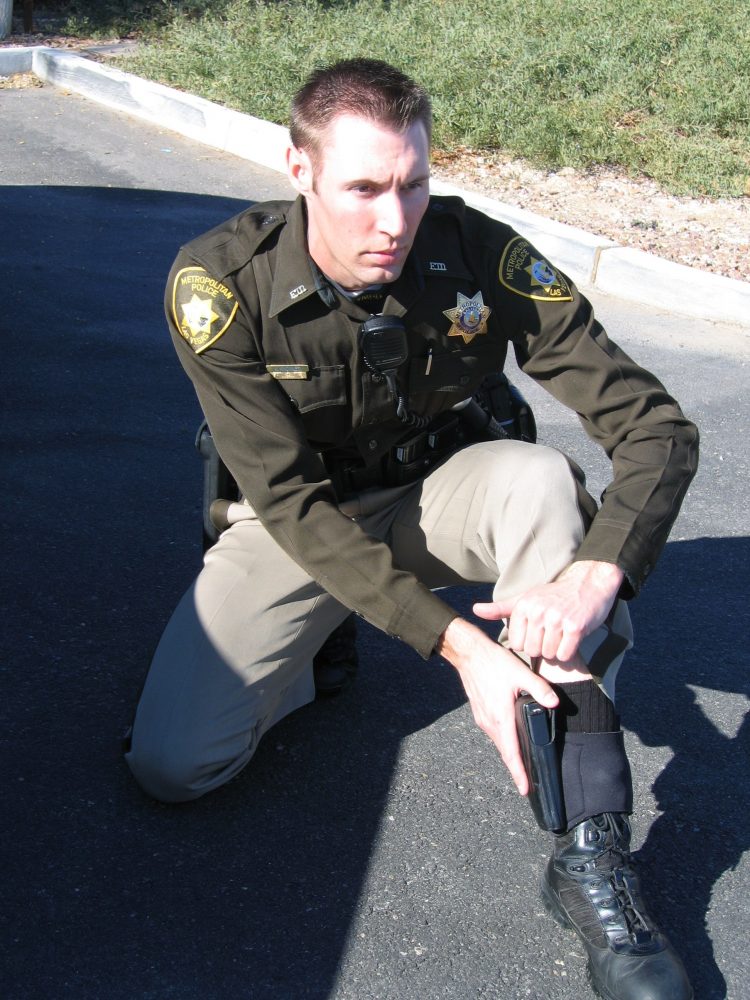
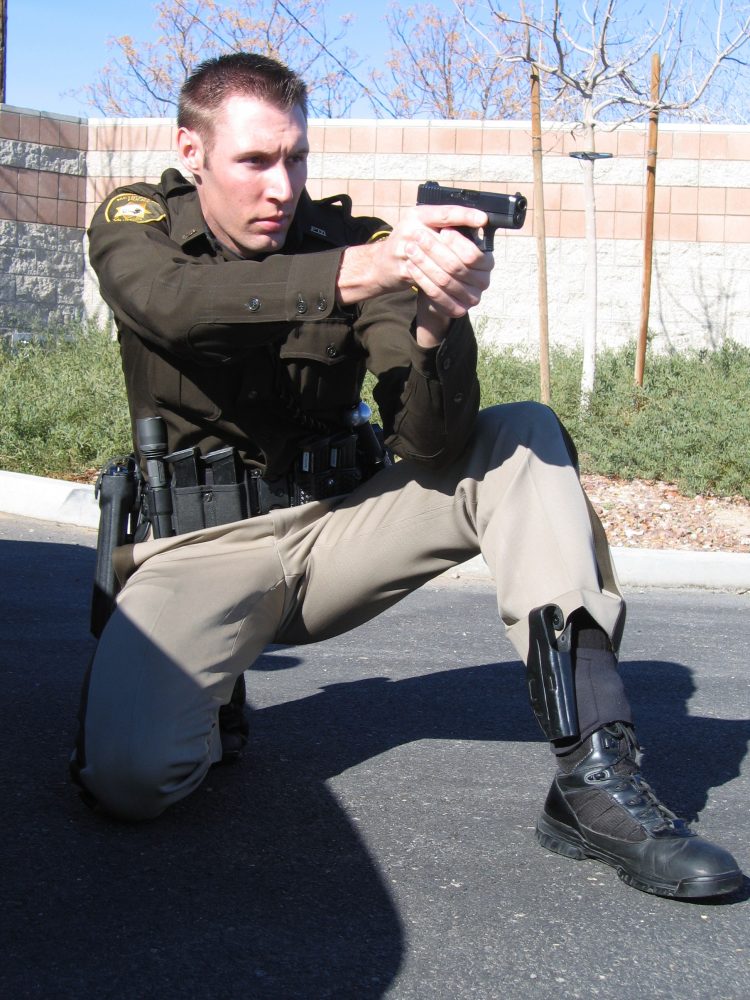
Lots of gun guys like a small revolver as the second gun. The Smith & Wesson J-frame .38 Special five-shot revolver has filled this role for 50 years. These small guns are available in several configurations: hammerless, shrouded hammer, titanium construction, and with a variety of finishes. There are also quality quality pocket pistols from Ruger, Taurus and others.
Revolvers are popular due to the simplicity and reliability they offer. They are simple to use under the stress that will be present when you need to employ a back-up gun—front sight, press the trigger. Should the gun not fire, press the trigger again. If you are at contact range, the gun can’t go out of battery when you shove it into an opponent’s body and shoot.
Others may opt for a semi-auto as the second gun. The only real advantage to this is if it’s a small version of your primary pistol. A full-size 1911 and an Officer’s ACP work the same, and the little gun can use the big gun’s magazines. The same is true for the Glock family. Many compact models are clones of their big brothers. The ability to use the same magazines, the same trained manipulations, and the same controls is invaluable. You won’t have time to think about the controls when you find yourself against the wall.
Having said this, my personal favorite for a small 1911 is the Springfield Armory EMP. It’s a tiny 9mm 1911 that gives me ten (10!) tries to resolve the problem if my primary didn’t.
The caliber of the second gun has to be adequate to do the job. A .22 or .25 just isn’t up to it, even though both have been used successfully. There’s a warrior haunting the halls of LVMPD who killed a goblin in a toe-to-toe fight armed with a .25, even after being shot full of holes. This, however, is more a testament to his spirit than to his choice of guns. A .38, 9mm or .45 takes up about the same space and delivers more energy. We just can’t count on getting that perfect hit when wounded and scared, so more energy is a good thing.
Where to carry the gun is a matter of preference, duties and environment. The ankle holster is still a good bet and is used by many. The ankle holster offers concealment, the ability to carry a variety of guns, and good access. The bellyband is also good, as it offers two of the above virtues, but is slow to get to. Chest carry—under the uniform shirt and on the body armor—offers all of the above and ambidextrous access.
I had a student from Chicago PD in a class I taught. He carried a pistol on each hip, which the SOP at that time allowed. This option is a good one, if permitted, but not many admin weenies want “Two-Gun Pete” officers on the street.
One option that is close, but less visible, is an inside-the-waistband (IWB) holster on the weak side. This allows good access and is less visible. I saw an officer with a Glock 27 behind his mag pouches, and I could barely see it. That seems like a great compromise to me.
As with carrying any gun, retention is an issue. I’ve done some grappling while wearing a bellyband and a Blade-Tech IWB, and found that the IWB holster retained the gun very well; not so for the bellyband. If my department SOP allowed it, I’d opt for an IWB, weak-side second gun. I habitually carried a J-frame S&W on my ankle when I was a working troop.
We should each find a system that works for us, then train, train, train and carry a second gun.
TWO KNIVES
I carry two SOG Flash II folding knives almost every day. When I worked in uniform, I also carried a boot knife in my weak-side boot.
The biggest issues in using a defensive duty knife are training, documentation, and policy. Deadly force is deadly force, whether you shoot ‘em, stab ‘em, or hit ‘em with a brick—it’s all deadly force.
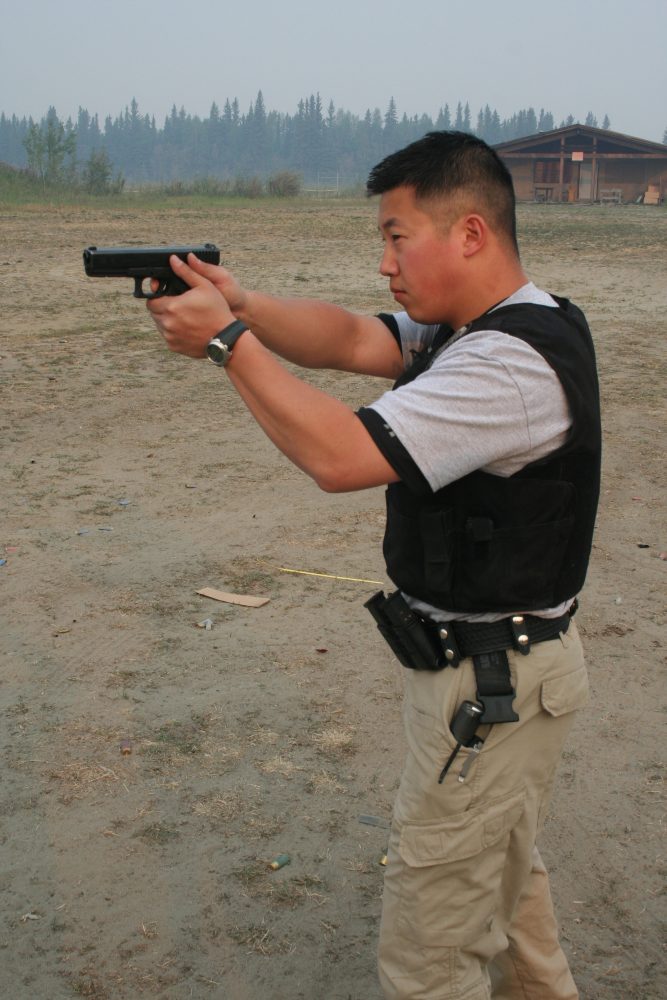
The public and administrative perspective, though, is a lot different. America is a pistol country, and using a knife is pretty rare.
Recently there was a great story about a California officer who used his knife during a struggle for his gun. He kept the gun and cut his opponent enough to win the fight—good for him!
The type of knives is a consideration. Every copper I know carries a folding knife for routine chores. It’s beneficial to view the knife as a last-ditch defensive weapon, not just a letter opener. High-quality folders are made by dozens of reputable makers, and which ones an officer chooses are matters of preference, cost and ease of use.
Automatics (“switchblades”) are probably not the best choice due to their image. If you carry a switchblade, you’re looking for a knife fight, but a Spyderco folder is just a utility knife you got lucky with. Keep surviving administration and potential legal proceedings in mind when you select a knife.
I like fixed-blade knives and think they offer some advantages, but carrying a boot knife presents the same problems as an automatic.
Where the knife is carried can be critical. If both knives are carried on the belt or in pants pockets, how are you going to access one when the goblin is straddling you in a mount position?
Some of my students carry one knife high on the chest, clipped to an external vest. Many carry one on the strong side behind the belt, with the second carried weak side on the ankle. A few have uniform pants with a sap pocket and carry the second knife there.
One knife should be carried weak side, since the strong hand may be protecting the gun, holding the bad guy, protecting your face, or something else. Having the ability to deploy and use a knife with the weak hand may be a lifesaver.
“Fuji” presents his backup Glock from his vest carrier.
TWO MAGAZINES
A former co-worker was once in a chase after an armed robber. Sam was in the passenger side with an M16A1. He leaned out the window to shoot, accidentally hit the mag release, and watched his only magazine drop to the street. A spare mag would have allowed him to continue.
Magazines are easily lost or damaged, and we all miss. If we carry a reload every time we carry the gun, we can fill up and go back to work if the first load doesn’t solve the problem.
A speed strip of five rounds carries the revolver reload, and a spare mag can easily be carried when you put on the pistol. Most readers will remember the off-duty officer who stopped a mall shooting in Utah a couple of years ago. He only had one magazine in his Kimber and was not able to reload. It took responding officers to finish the fight.
TWO LIGHTS
The advent of small, bright, rugged lights makes this a no-brainer. Like the pistol and the magazine, lights are composed of breakable components and can also be lost. Having a spare makes a lot of sense. The cost of basic lights, like the aptly named SureFire Backup, gives the officer or armed citizen an easy option for a second light.
The primary light should be powerful enough to illuminate your back yard or the building you are searching.
I am a strong proponent of using the light as an impact weapon if necessary, so enough weight and strength for that are needed. I carry a Maglite rechargeable in each vehicle and keep one near my front door for this reason. A uniformed officer can approach with the light in the weak hand, ready for a block or a strike if needed. The blow is no different from a baton, and should be considered legitimate use-of-force.
Officer Vrablik has a double-feed…
…so presents his J-frame .38 from a Blade-Tech IWB weak-side holster.
If thump therapy isn’t a consideration, I really like the SureFire M3 Combat Light as a general-purpose light. It’s lightweight, very effective, and allows for a variety of flashlight/handgun techniques. The combination of size, weight and power make it perfect to insure the target area is clear before putting rounds downrange. I also use the SureFire Aviator, which allows the use of both blue and white light, so my night vision is preserved.
The second light should be smaller but high quality and high output. The SureFire E2, Defender, Aviator, and Outdoorsman all fill the bill, as do lights from other quality manufacturers.
ADDITIONAL CONSIDERATIONS
Speaking of which, always keep quality in mind when making purchasing decisions. As Pat Rogers says, “Buy cheap, buy twice.” It makes no sense to spend $1,000 on a fighting pistol and then spend $5 at Wally World for a light your life may depend on.
As with all things dealing with being armed, don’t forget training. In Chicago during Prohibition, Dion O’Bannion carried three guns. Al Capone’s guys killed him when one shook his hand and held on—while two others shot him full of holes.
You can carry five guns, ten mags, 27 knives, a flamethrower, and enough light to film the Super Bowl, but if you don’t seek out quality training, go to school, then practice, none of them will do you any good.
It does not matter if you are a policeman, Soldier, Marine, or private citizen: think about what you may need to carry and work with to resolve a threat on your life. It does not matter if you are at the mall, at home in bed, or in Baghdad: if the devil jumps up, you gotta deal with him quickly, efficiently and permanently. If you have enough of the right gear, the right training, and the right mindset, you’ll probably walk away. If you don’t, you probably won’t.
[The author can be reached at [email protected].]
